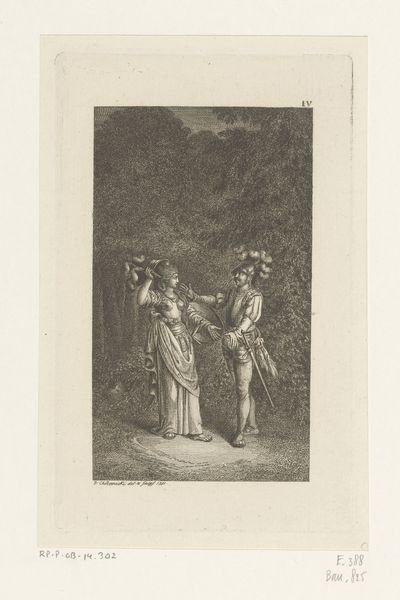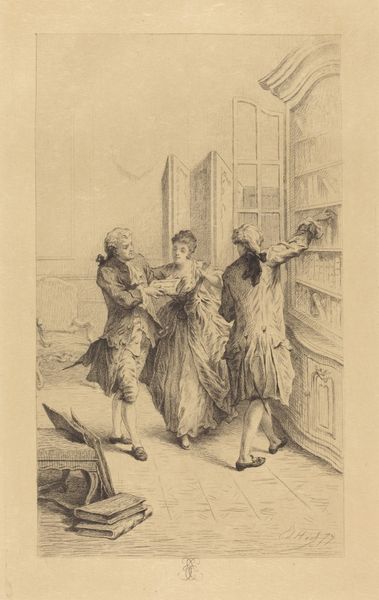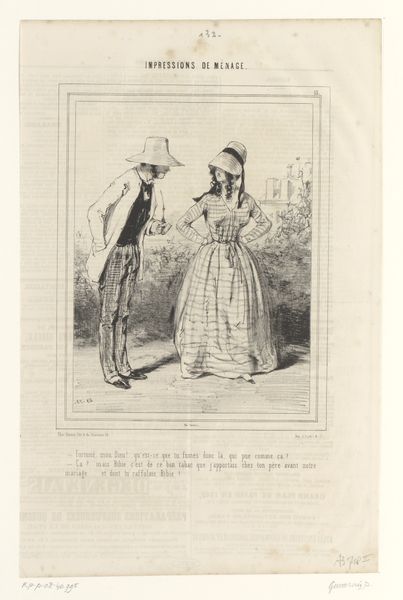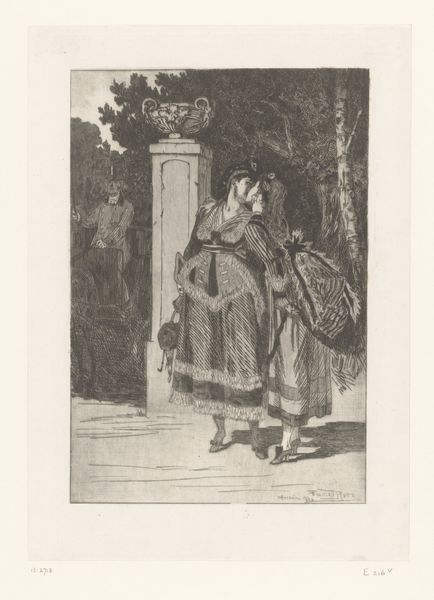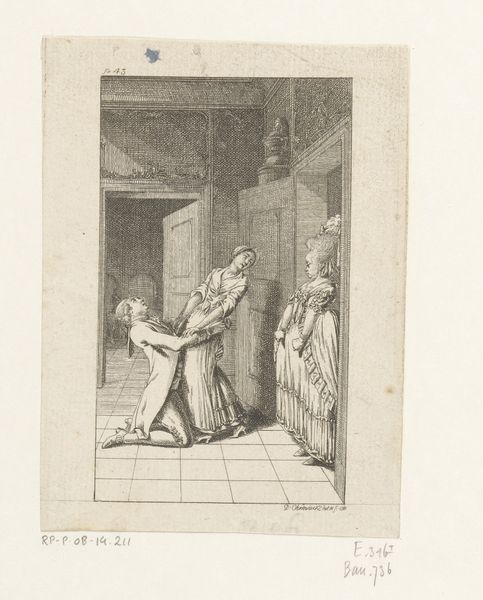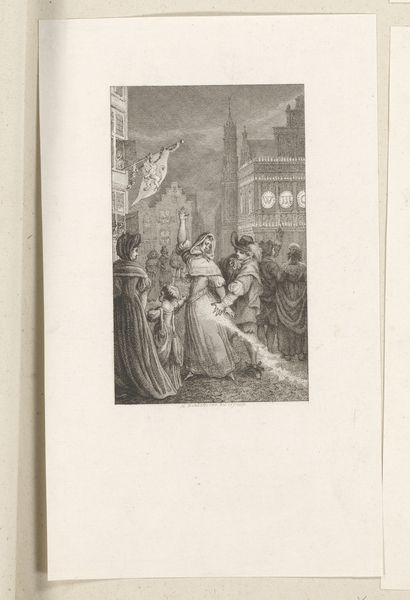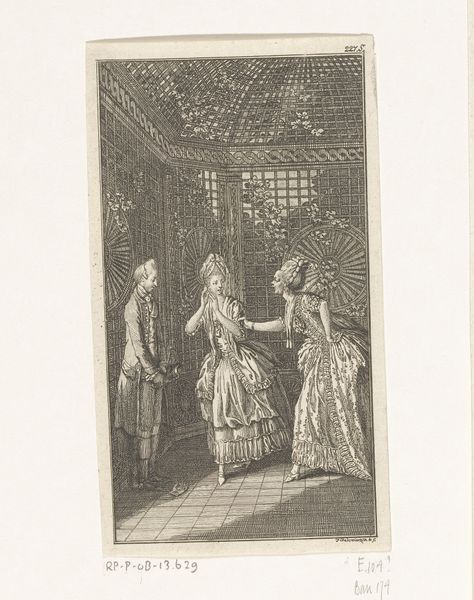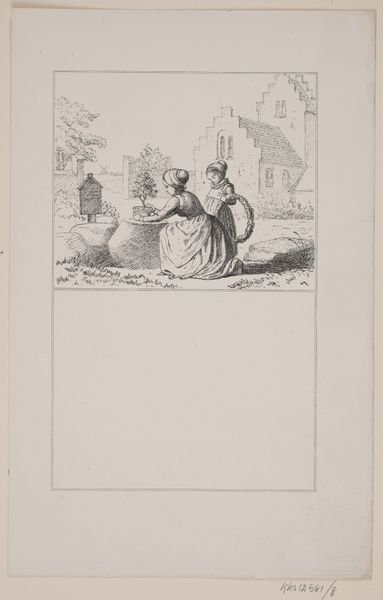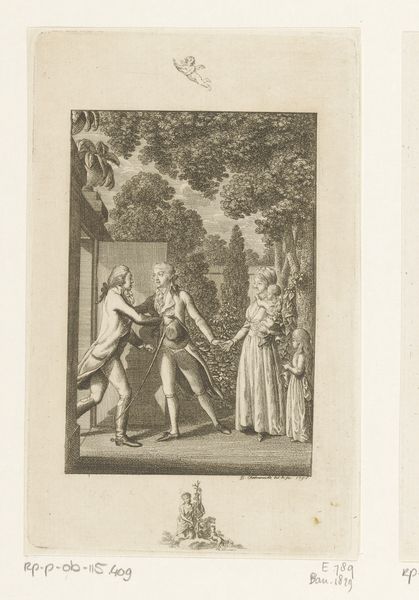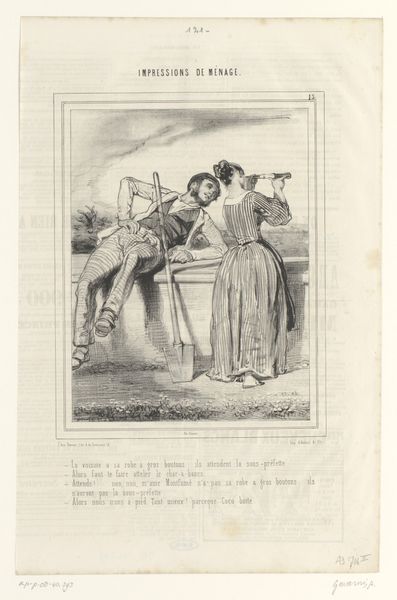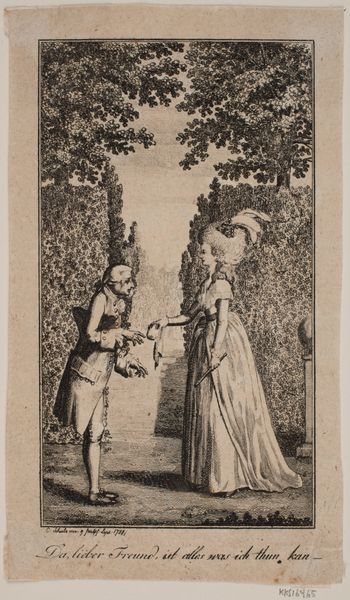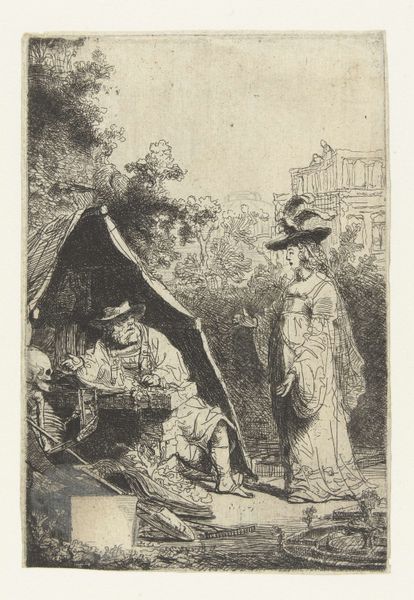
print, etching, engraving
#
neoclacissism
# print
#
etching
#
caricature
#
etching
#
genre-painting
#
engraving
Dimensions: 126 mm (height) x 78 mm (width) (bladmaal)
Curator: This etching by Georg Christian Schule is called "Der alte Adelstolz," created in 1798. It is currently housed in the Statens Museum for Kunst. Editor: My initial impression? An acidic social commentary! The stark contrasts and grotesque exaggerations… it screams mockery of the aristocracy. Curator: Precisely! Schule’s work offers insight into the social tensions brewing at the end of the 18th century. This print, typical of the time, circulates and satirizes the aristocratic class, highlighting their perceived arrogance and detachment from the populace. The French Revolution had only recently shaken the foundations of Europe. Editor: Observe the formal elements: the stark linearity achieved through etching and engraving. Each line meticulously carves out a caricature, the long, pointed noses, the man’s flamboyant attire, and the woman’s exaggerated hair—all conspire to create a deeply unflattering image. It is wonderfully unbalanced. Curator: Yes, unbalanced both visually and, more importantly, socially. Note the significance of this image circulating. Prints like these became potent tools for disseminating critical perspectives, shaping public discourse around class and privilege. Schule challenges the norms through representation, participating in a broader movement. Editor: Consider, too, the space, these figures placed somewhat absurdly against the carefully regimented landscape background of trimmed hedges and small trees—neat, rigid and unnatural. Yet the aristocracy, caricatured and preening, cannot see their artificiality—a perfect formal complement to your political reading. Curator: Absolutely. It speaks volumes about the perceived artificiality of their entire existence, especially their detachment. It invites the viewers to reassess existing social hierarchies and power dynamics of the late 18th-century Danish society. Editor: The mastery here lies in the reduction to form. Schule utilizes stark visual elements to express pointed cultural criticisms, leaving little to ambiguity. Curator: Studying the circulation and reception of such images reveals much about shifts in power dynamics of the era, laying the groundwork for future socio-political changes. Editor: It’s a potent reminder of how artistic choices converge to generate social and political discourse even centuries later. Curator: Indeed, offering a glimpse into the turbulent atmosphere that permeated the end of the 18th century.
Comments
No comments
Be the first to comment and join the conversation on the ultimate creative platform.
